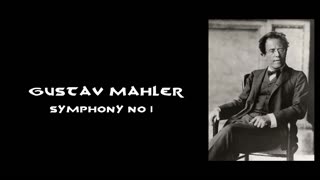Cantata BWV 198, Laß, Fürstin, laß noch einen Strahl - Johann Sebastian Bach 'Helmuth Rilling'
Composition Year: 1727 in Leipzig
First Performance: 1727-10-17 in Leipzig
Dedication: Funeral Ode on the Decease of the Consort of Augustus the Strong – Christiane Eberhardine, Queen of Poland and Electoral Princess of Saxony
Recorded: Gedächtniskirche Stuttgart, September/Oktober 1983
~
Performers:
Arleen Augér – Soprano • Gabriele Schreckenbach – Alto • Aldo Baldin – Tenore • Philippe Huttenlocher – Basso
Sibylle Keller- Sanwald, Wiltrud Böckheler – Flauto • Günther Passin, Hedda Rothweiler – Oboe d’amore • Günther Pfitzenmaier – Fagotto Georg Egger, Radboud Oomens – Violino • Siegfried Pank, Ulrich Walter – Viola da gamba • Stefan Trauer – Violoncello • Claus Zimmermann – Contrabbasso • Konrad Junghänel – Liuto • Hans-Joachim Erhard – Organo
~
Bach-Collegium Stuttgart • Württembergisches Kammerorchester Heilbronn • Helmuth Rilling - Conductor
~
Prima Parte
00:01 1. Chorus: Laß, Fürstin, laß noch einen Strahl
05:48 2. Recitative (soprano): Dein Sachsen, dein bestürztes Meißen
08:02 3. Aria (soprano): Verstummt, verstummt, ihr holden Saiten!
11:20 4. Recitative (alto): Der Glocken bebendes Getön
12:29 5. Aria (alto): Wie starb die Heldin so vergnügt!
18:32 6. Recitative (tenor): Ihr Leben ließ die Kunst zu sterben
19:54 7. Chorus: An dir, du Fürbild großer Frauen
~
Part II
22:15 8. Aria (tenor): Der Ewigkeit saphirnes Haus
27:19 9. Recitative, Arioso & Recitative (bass): Was Wunder ists? Du bist es wert
29:46 10. Chorus: Doch, Königin! du stirbest nicht
~
Work:
Laß, Fürstin, laß noch einen Strahl (Let, Princess, let still one more glance) is a secular cantata composed as a funeral ode by Johann Sebastian Bach, first performed on 17 October 1727. In Wolfgang Schmieder's catalogue of Bach's works (BWV) it was assigned the number 198. It is also known as Trauerode or as Trauerode: auf den Tod der Königin Christiane Eberhardine.
~
History and text -
Bach wrote several works for celebrations of the Leipzig University, Festmusiken zu Leipziger Universitätsfeiern.
~
He composed this cantata at the request of the university as a funeral ode for Christiane Eberhardine, wife of August II the Strong, the Elector of Saxony and King of Poland. The cantata was first performed on 17 October 1727 in the University Church in Leipzig. Bach himself directed from the harpsichord. The text was written by Johann Christoph Gottsched, professor of philosophy and poetry.
~
The text is purely secular, proclaiming how the kingdom is in shock over the princess' death, how magnificent she was, and how sadly she will be missed. Sacred elements pertaining to salvation and the afterlife are absent. Bach, however, as was his custom, included a cryptic reference to salvation in the music. The first movement of the second section Der Ewigkeit saphirnes Haus ("Eternity's sapphiric house"), which was performed following the oration, contains underlying elements of the first movement of the cantata BWV 56, Ich will den Kreuzstab gerne tragen ("I want to bear the cross") which Bach had composed one year earlier. The measures 70–75 contain a direct quote (played by the oboe) of the bass solo voice in measures 91–98 from BWV 56 where the text is Der führet mich nach meinen Plagen zu Gott, in das gelobte Land ("which leads me to God in the promised land after all my tribulation").
~
Bach later borrowed from the cantata for his St Mark Passion and for Klagt, Kinder, klagt es aller Welt, BWV 244a, another funeral ode written in 1729.
~
Bach Cantatas website: https://www.bach-cantatas.com/
~
ATTRIBUTION
Music contained in this video is licensed to, Hänssler-Verlag, Germany
-
 52:05
52:05
Classical Music P.D.
1 year agoSymphony no. 1 in D Major - Gustav Mahler - 'Barbara Schubert'
3571 -
 LIVE
LIVE
Matt Kohrs
13 hours agoThe Critical Trading Week Ahead (Watch These Stocks!) || The MK Show
1,536 watching -
 37:35
37:35
BonginoReport
4 hours agoTelegram CEO Arrested??? Here's Who Is Really Behind It.(Ep.29) - 08/26/24
49.1K73 -
 1:30:18
1:30:18
jeffahern
2 hours agoMonday Madness With Jeff Ahern
13.8K2 -
 1:25:43
1:25:43
Game On!
12 hours agoNo Tom Brady or Bill Belichick | What does this mean for the future of the NFL?
16.6K3 -
 1:12:50
1:12:50
The Late Kick with Josh Pate
17 hours agoLate Kick Live Ep 545: Chaos Is Coming | GT Stuns FSU | New JP Poll | Herbie Haters | NCAA vs Mich
25.1K -
 6:00
6:00
Rock Feed
19 hours agoThe Return of Linkin Park Is Finally Here
18.5K2 -
 16:33
16:33
Bearing
23 hours agoTikTok CRINGE Apocalypse! It Keeps Getting Worse.
30.3K60 -
 31:28
31:28
Destene and Brandon
18 hours agoFirst time at the Rodeo | Target Bump Approved Haul | Couples Brunch | New Clothing Launch! | Vlog
21.5K -
 13:43
13:43
GameLeap RAID Shadow Legends
15 hours agoEASY CHAMPION TEAM for Dark Fae (FARM ON AUTO!) - Raid: Shadow Legends Doom Tower Guide
24K4